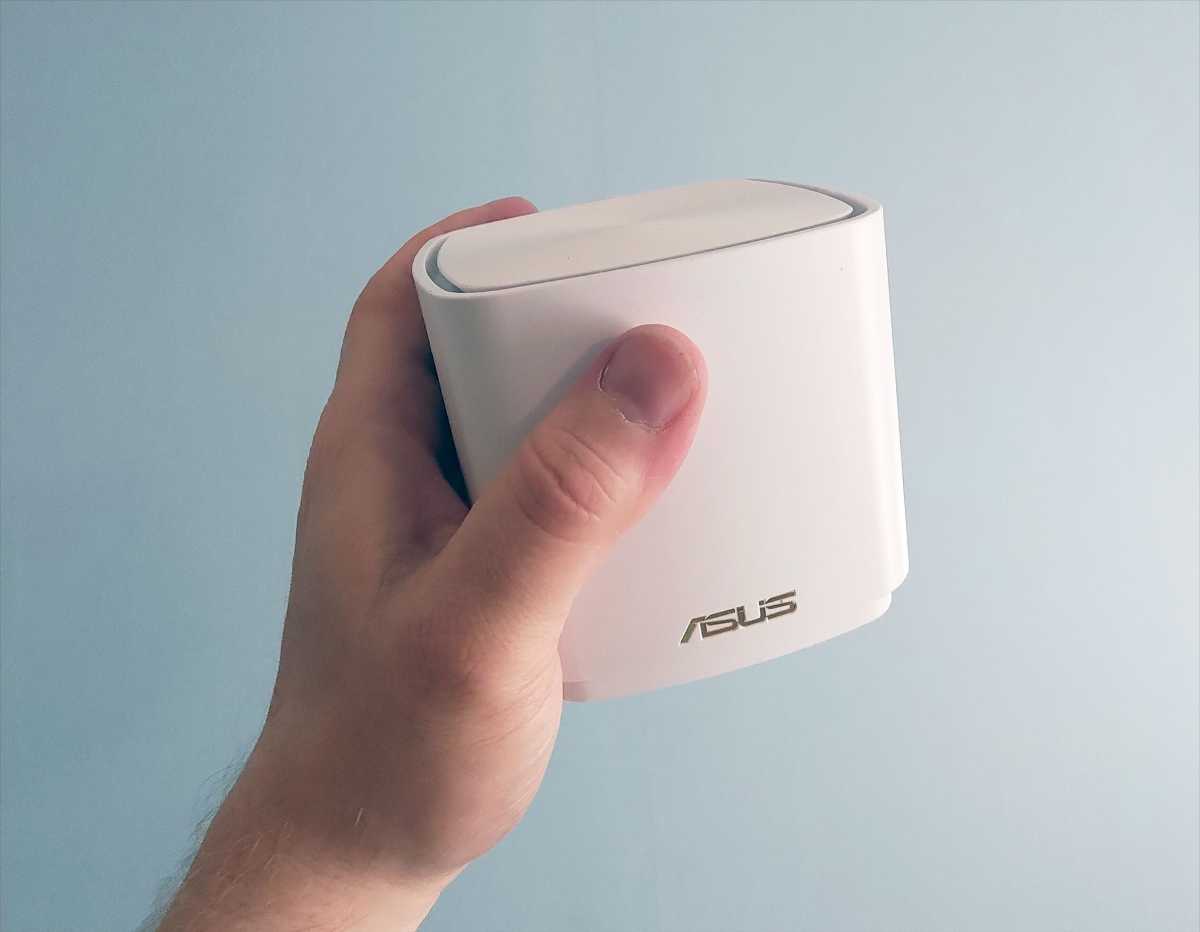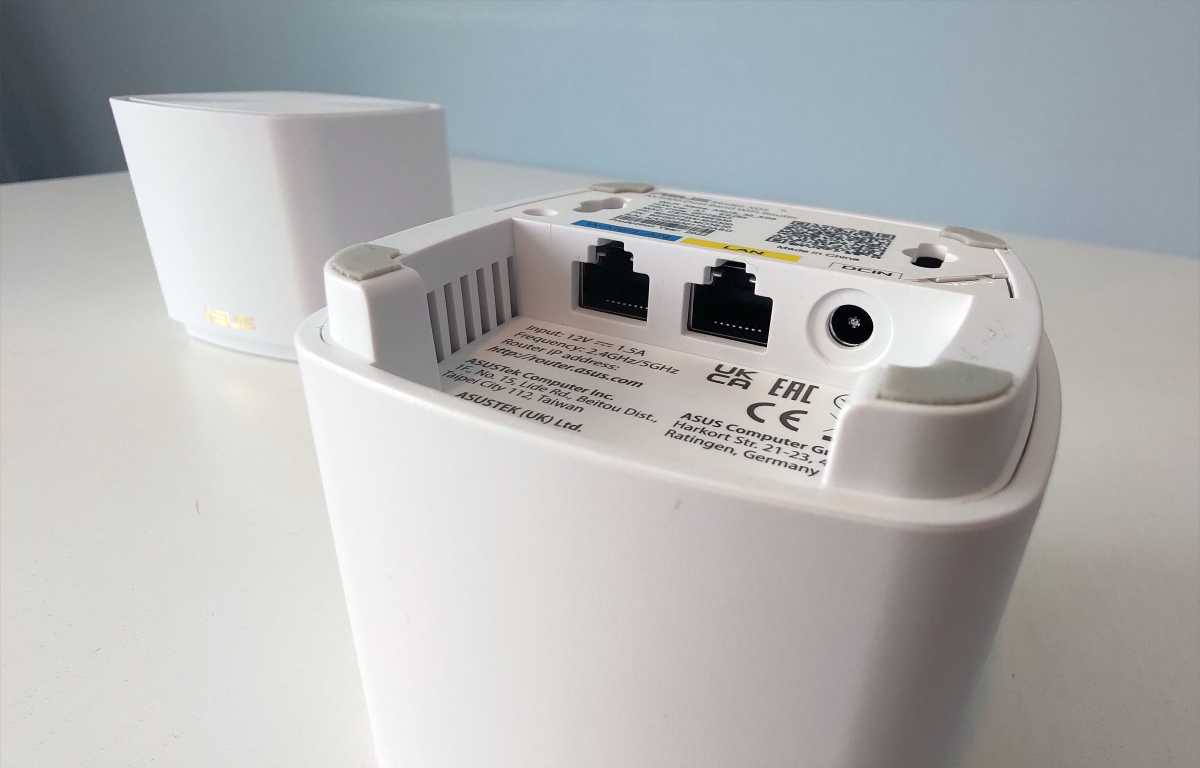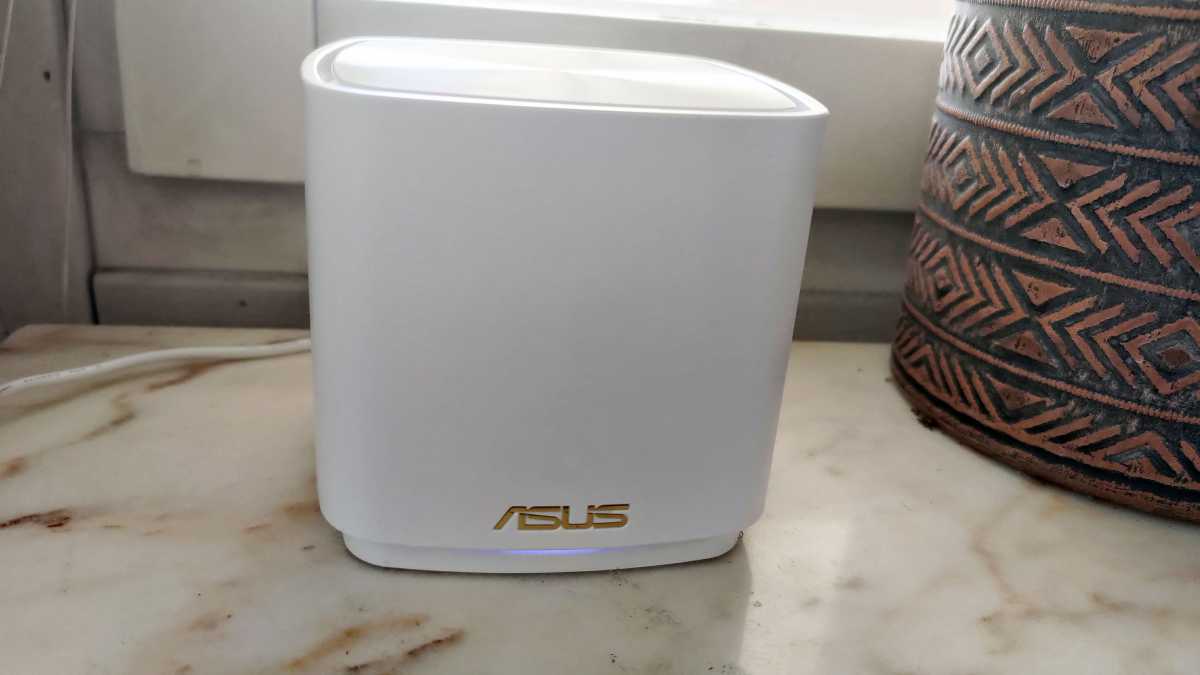Expert rating
Benefits
- Sleek and compact
- Good performance and autonomy
- Lots of features
The inconvenients
- Not the easiest to manage
- Backhaul sometimes goes down
- Only two wired network ports on each node
Our opinion
Asus’ new mini-mesh is clearly better at the most important things than its predecessor. It can be difficult to get the most out of the router with its many features and inconsistent interface, but once you get the hang of it, it’s worth the effort.
Best Prices Today: Zenwifi AX Mini XD5
The main advantage of Wi-Fi 6 over Wi-Fi 5 is range. Simply put, a Wi-Fi 6 router can maintain high-speed communication with 40-50% greater range than a Wi-Fi 5 router. And that makes Wi-Fi 6 mesh plans particularly attractive. You might get by in a bigger house with a two-pack instead of three or more nodes. Less complicated to set up, and less expensive.
However, Asus doesn’t seem to understand this. With the ZenWIFI AX Mini XD4 that I tested in early 2022, you get all the other benefits of Wi-Fi 6: fast top speed, increased security in a sleek, feature-rich little router, but only about 15 meters from range per knot while maintaining acceptable speeds.
Asus has fixed this in the follow-up: the ZenWIFI AX Mini XD5.
Now I can put a second two-piece node from the main unit and still get stable wireless link speeds of over 200 Mbps, letting you download, browse, and stream in high definition without any issues. The maximum speed of a laptop with 2×2 Wi-Fi 6 under ideal conditions, about three meters from the router in the same room, is still around 800 Mbps on 5 GHz.

Matthias Inghe
More bandwidth, but not faster
When setting up the system, you can choose between having a single SSID for 2.4 and 5 GHz, or splitting them up and choosing which one to connect to from each device yourself. Since 2.4GHz bandwidth is limited to just over half a gigabit, it might be a good idea to split them up, connect your smart home gadgets to the slower frequency, and then connect 5GHz computers and phones, where you have more bandwidth to work with. with.
Not much more: it’s a dual-band AX3000 system where there’s 2,400Mbps of bandwidth for the devices and the mesh system itself to share. This is an increase over the ZenWIFI AX Mini XD4 which only had 1,200 Mbps on 5 GHz. So if the old model was suitable for one or two people in a two-room apartment, the ZenWIFI AX Mini XD5 can be considered suitable for two to three people in three to five rooms. Maybe even a balcony or patio, if you place the second node in the best position. Asus claims 3,500 square feet of coverage for the two-pack XD5 and 5,000 square feet for the three-pack.
In a week-long test where I used two XD5 devices as my primary home Wi-Fi, things were fine overall. A few times the link between the nodes was interrupted and the system had to reconnect, which happened automatically, but took about two minutes. A little annoying, but not a big deal. When this happened, I was able to connect to the main (further away) router and continue to surf, but at a lower speed.
When testing with a laptop with Wi-Fi 6E, I measured a speed of 820 Mbps at a distance of 3 m from the main node: about what you would expect from a dual-band Wi-Fi 6 system around this price. And the range is about 20m/60ft (with two internal walls between the laptop and the node) to maintain a minimum of 200Mbps.

Matthias Inghe
Same shape, new color
A two-pack XD5 costs £213 on Amazon and a three-pack costs £315. In the US, they are much better value for money, with Amazon selling the three-pack for $219.99. You cannot easily find the two-pack for sale.
It is also sold as a single unit, in case you want to add extra coverage later. However, consider what you’ll need, as you’ll save a lot by buying the right number from the start, rather than getting individual extras and expanding later.
The XD5 units retain the compact design of the XD4: cubes with rounded sides, with all external dimensions less than 100 mm / 4 inches, two gigabit network ports underneath, one of which can be used for a WAN connection (usually to connect main unit to your existing router), and a discreet LED at the bottom of the faceplate. The XD5 is available in white as well as the black of the XD4. Additionally, there are now brackets at the bottom which make it easier to mount them on a wall, which is not possible with the XD4.
Functionally, the XD5 offers the same rich feature set as the XD4. This means you get both VPN server and VPN client, detailed QoS control, parental controls with scheduling and content filtering for kids, versatile guest network capability and built-in lifetime antivirus monitoring from Trend Micro. These are the kinds of features that other vendors charge extra for, but Asus does not.

Matthias Inghe
Setting up and administering everything can be a challenge. You can do a lot through the Asus app, with more detailed network and Wi-Fi settings than many competitors, but for full control you sometimes have to log into the much messier web interface. But it’s worth exploring and familiarizing yourself with, so you can get the most out of the system.
Features
Product Name: Pack of 2 Asus Zenwifi AX Mini XD5
Wireless Protocols: WiFi 6
Frequency band: 2.4GHz + 5GHz
Performance: 574 + 2400 Mbps
Connections by device: 1 gigabit WAN/LAN, 1 gigabit LAN
Wireless Security: WPA/WPA2, WPA3, WPS
Speed, 3m*: 820 Mbps
Range per unit**: 20 meters
File Server/Write Server: No no
Other: Guest network, parental control, qos, antivirus, vpn server and client, Alexa and IFTTT support
User interface: web, app
Remote administration: Via app
Dimensions. antennae: 9 x 9 x 8 cm
* Measured on System Head Unit to Laptop with 2×2 Wi-Fi 6E
** Longest distance, including two interior walls, where a new mesh node is required to maintain surfing speed of at least 200 Mbps.
Table of Contents








